DISCALIMER: THE OPERATIONS HEREIN DESCRIBED VOID ALL WARRANTIES!
YOU ARE ADVISED TO ANALYZE AND DECIDE IF WHAT IS WRITTEN HERE APPLIES TO YOUR CASE AND DECIDE ON THE MERITS AND SIMILARITIES TO YOUR SITUATION.
CCA DOES NOT MAKE ANY WARRANTY OR CLAIM THAT WHAT WORKED HERE WILL WORK FOR YOU.
IT IS YOUR CHOICE AND YOUR DECISION.
Phew!, OK, now that that is over:
A few weeks ago, someone was chiding me for not doing more out of Field Target.
Well, the truth is that I do do a lot more, but it doesn't get written much, LOL!
But I took the gentle criticism to heart and decided to write more about things that may interest more the general airgunner.
This is the case here.
Optics Planet is one of the more serious retailers of optics in the USA., if you go to their "Riflescopes" section, you will get over 2,000 riflescopes with a total of over 3,400 models to choose from!
It would be impossible to list them all, but they have pretty much anything your heart could desire from the nearly $5,000 night vision scopes to the $70 budget minded shooter.
Airgunners, in general, are thrifty people. We like achieving our goals with the minimum of muzzle energy, and in many cases, with a considerable handicap as far as equipment is concerned.
The exception is the target shooters crowd that can dedicate $3,000 to a rifle and/or $4,000 to a scope.
BUT, the challenge is still the same:
Hit the target with enough energy to do the trick, but nowhere near enough to make the environment, the short distances and the small sizes of the targets become irrelevant.
And in this sense of "thriftiness" we are constantly looking for things that may work better than the manufacturers originally intended with a little "tweaking". It is the quintessential American Hot-Rodder spirit.
So, when the offer came up to see what we could do with $70, the challenge was irresistible, LOL!
We picked the Traditions Hunter series Black Powder Riflescope.
Why that one?
On one hand the magnification range seemed right for airgunners: 3.5-10 X
The objective size was interesting, not too large, not too small: 44 mm's
At 14,7 oz. (measured, because no one lists the weight) it is a light scope, will not change the balance of a good hunting rifle, nor will it make it top-heavy"
It was a FIXED parallax scope with multi-aimpoints reticle, one of which was labelled "50", so it stood to reason that the minimum parallax was set for 50 yards.
It is a little long for my taste (13", again, measured), but in optics, length makes the need for high quality optics a little more forgiving, you can get better sight picture with a long scope than with a compact one in the same price bracket.
Curiously enough, a quick question to the Tech Dept at Optics Planet about the parallax setting returned a "The manufacturers say they do not know" response! ¿¿¡¡??!!
It is worthy of note that the art. nmbr. 1145 scope is not listed in the Traditions website, so I cannot find another place to purchase this scope.
For years I have been advocating fixed parallax focus scopes for hunting and general airgunning. Problem was that most of the fixed parallax focus scopes analyzed have had very coarse reticles with aimpoints so far apart as to mean nothing to the airgunner's typical trajectory.
But this one was different, and so, we obtained the scope and proceeded to exercise it.
BUT, at this price range it doesn't hurt much to experiment and so with a GENTLE application of a heat gun to the front ring (that acts as a retaining ring for the front objective lens, a parallax fixing ring AND a finishing ring, the front ring came off with the aid of some rubber bands wrapped around the warm ring:
It will also change the focus, after all, what AO scopes do is to make this ring accessible to the user.
Could an accessible ring be devised so that it could be adjusted for FT? Probably yes, but for FT you will need a much better scope, so I think that would be trying to turn the proverbial sow's ear into a silk purse and we're really not into that.
Why 45 yards?
Because with the gun in question (a Walther LGV in 0.177" cal at 12 ft-lbs with the smoothest shot cycle I have ever experienced), I am fairly confident of hitting a 1" target at that distance.
Here it bears explaining that Parallax is the error between the location of the crosshairs and the actual location of the aimpoint. The best way to correct the parallax is not the focus, but to use the "head-bob" test.
In this test a target is placed at the desired distance and the scope is set in a tripod or other fixation device, the target is placed at the reticle's crosshairs and then the shooter's eye is moved up and down and side to side.
IF the crosshairs move in relation to the target, then the parallax is still off a little.
Correct and repeat.
Once the parallax was corrected it came the time to set the magnification to something useful.
What does the magnification has to do with the usefulness of the reticle?
Well, as is usual with "economy" scopes, the Traditions Hunter is a second focal plane reticle. That means that when you change the zoom in the scope (the magnification ring), the size of the reticle does not SEEM to change.
I am emphasizing "seem" because what your eye is doing is cheating on you.
Think about this:
If the size of the image changes, and the reticle does not change, then ¿what is the constant here?
Truth is that there is no constant.
You have the image of the target on one plane and the image of the reticle on another plane. If those planes do not coincide optically in a really good fashion, then moving your eye from one of the field of view to the other actually changes the position of the reticle on the target. Is your pellet equipped with a digital transponder tracking device? Nope!
So that minute changes in the position of the eye will yield quite big changes in the point of impact.
The reason why almost all scopes nowadays are second focal plane is a historic one and the subject of another blog entry, but in here what matters is that magnification needs to be set down and NOT MOVED, and then the reticle becomes useful.
Following the set of instructions to set the magnification of a scope already posted before in this blog, we set the scope on a tripod:
Why is that useful?
Well, it is to me because I am "metric" and so for me if a squirrel (about 6" high sitting on its haunches, or about 150 mm's) occupies the space between the two thick to thin transitions (4 mrads), it means that the squirrel in question is at 37.5 meters. Now we are using the reticle to RANGE the target as well as for holding off.
A crow that is about 8" or 200 mm's in height occupying the whole reticle would be at 50 meters.
There are plenty of articles in the internet about using the known dimensions of something to range the target, just look for "how to use mil-dots".
Now, if you do not feel like becoming metric, then you can follow the same process to set the magnification to a point where the subtensions are meaningful to YOU in MOA's, or Shooter's MOA / IPHY (Inch per hundred yards), but do start the process with your typical TARGET SIZE, whether it is a squirrel, a crow, a grackle, or a starling. Start at the TARGET SIZE to define what would be most useful to YOU.
Given the MV of the gun and the BC of the pellet in usage, we then know that the hash-marks correspond to:
And I took the precaution to shoot a group at 45 yards BEFORE fiddling with the scope, then I made all adjustments and re-shot the same distance, in a single target, these are the results:
Once the scope has been re-parallaxed, the accuracy at 45 yards improved, the group shrunk from about 2" to less than 1" and would be adequate for hunting, everything is in focus between 15 yards and 45, no need to fiddle with the focus to get a clear sight picture, the hash-marks are mostly useful to the airgunner because they are close enough to be meaningful, and if it rained or something terrible happened, only $70 would be lost.
Now, one last caveat: DO NOT be fooled by the subtension diagrams, the REAL reticle is pretty small, but that is what makes it USEFUL at a magnification that allows no focusing for different distances.
Hope you have enjoyed this, keep well and shoot straight!
HM
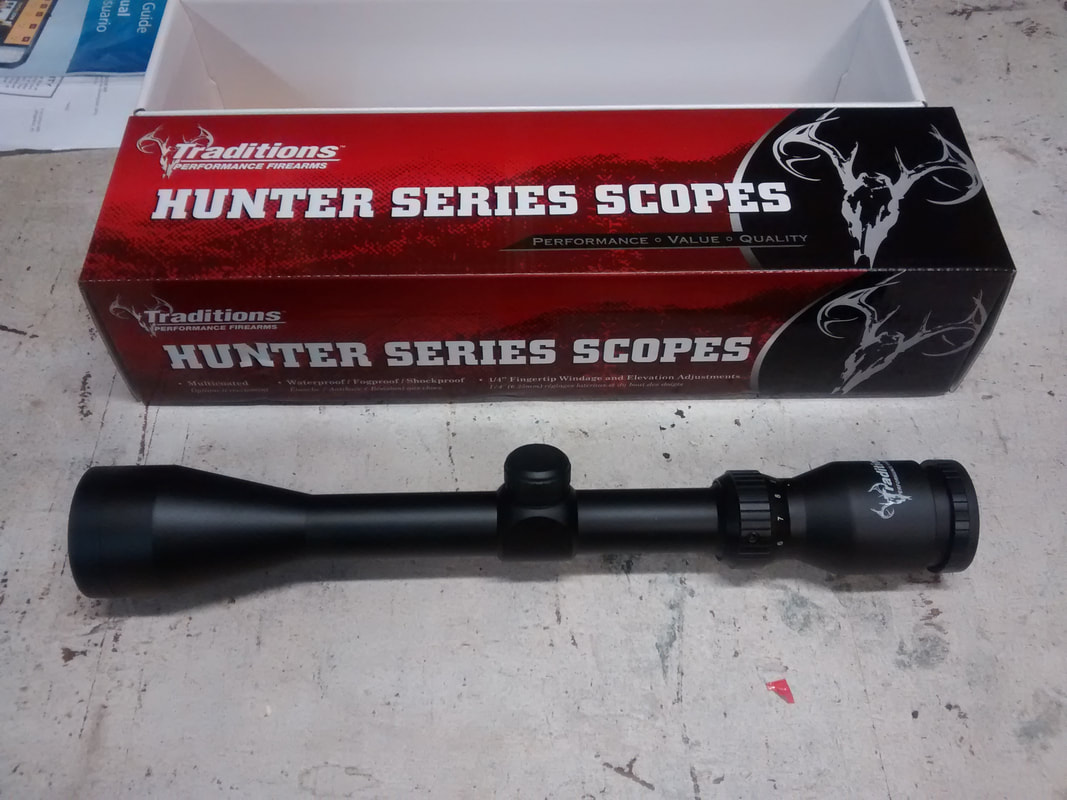
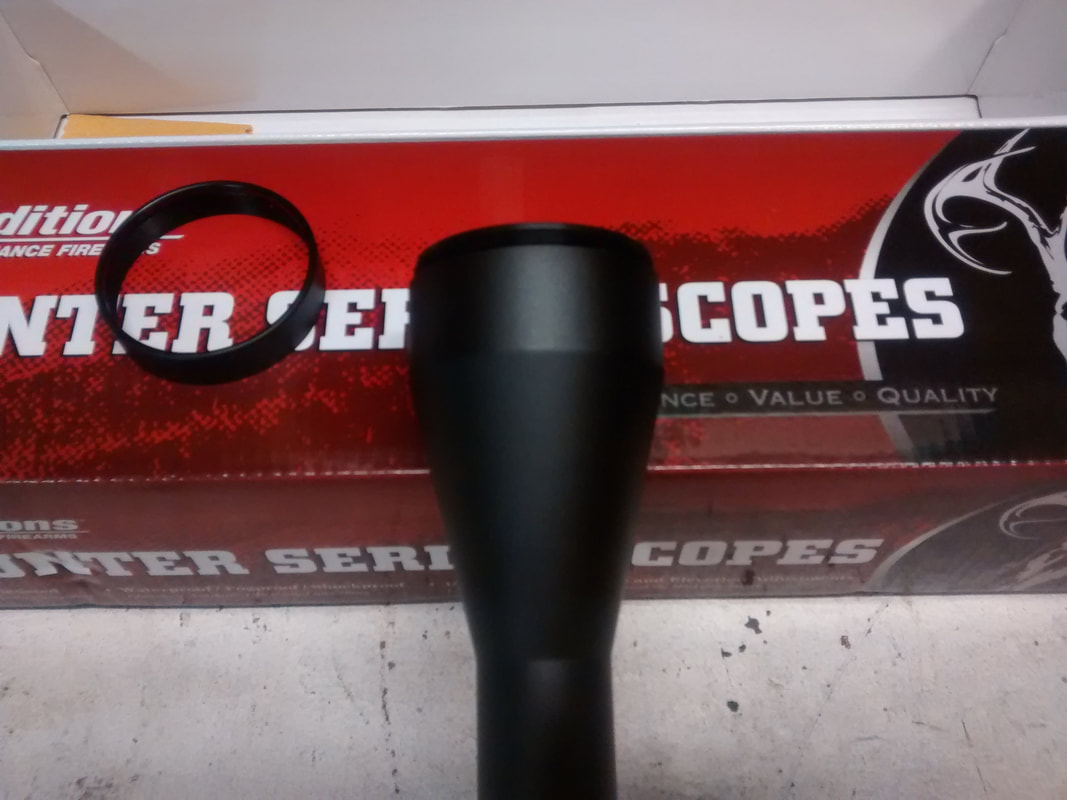
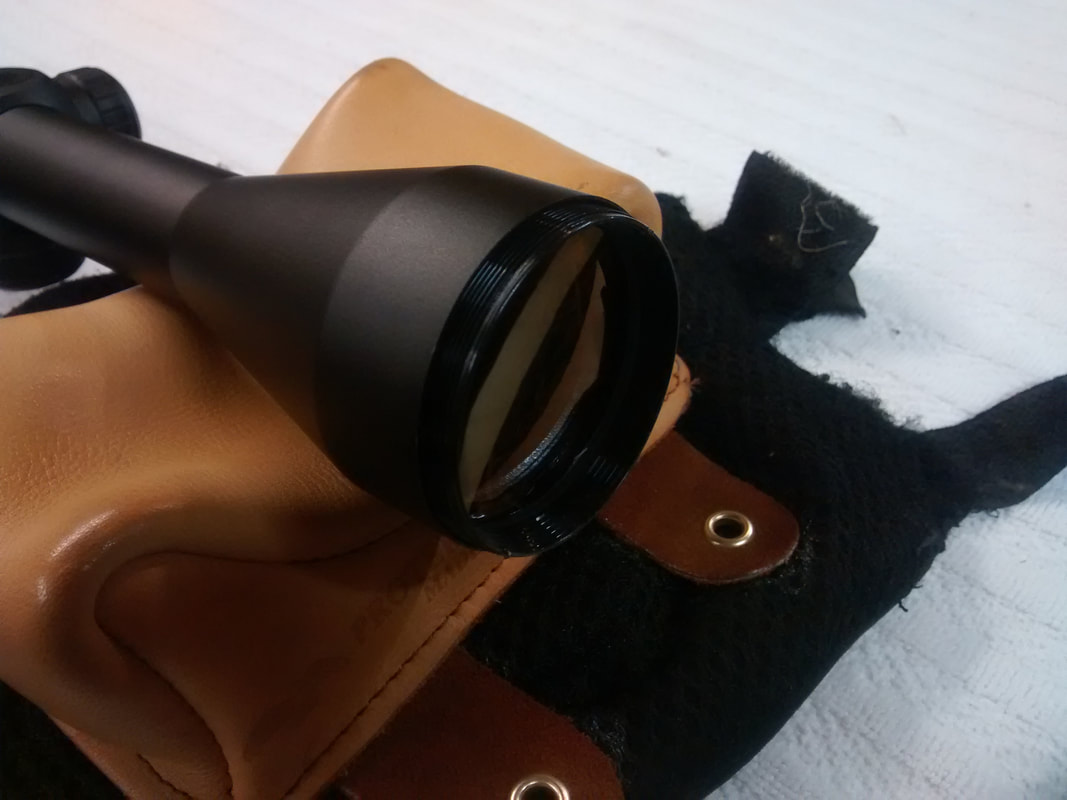
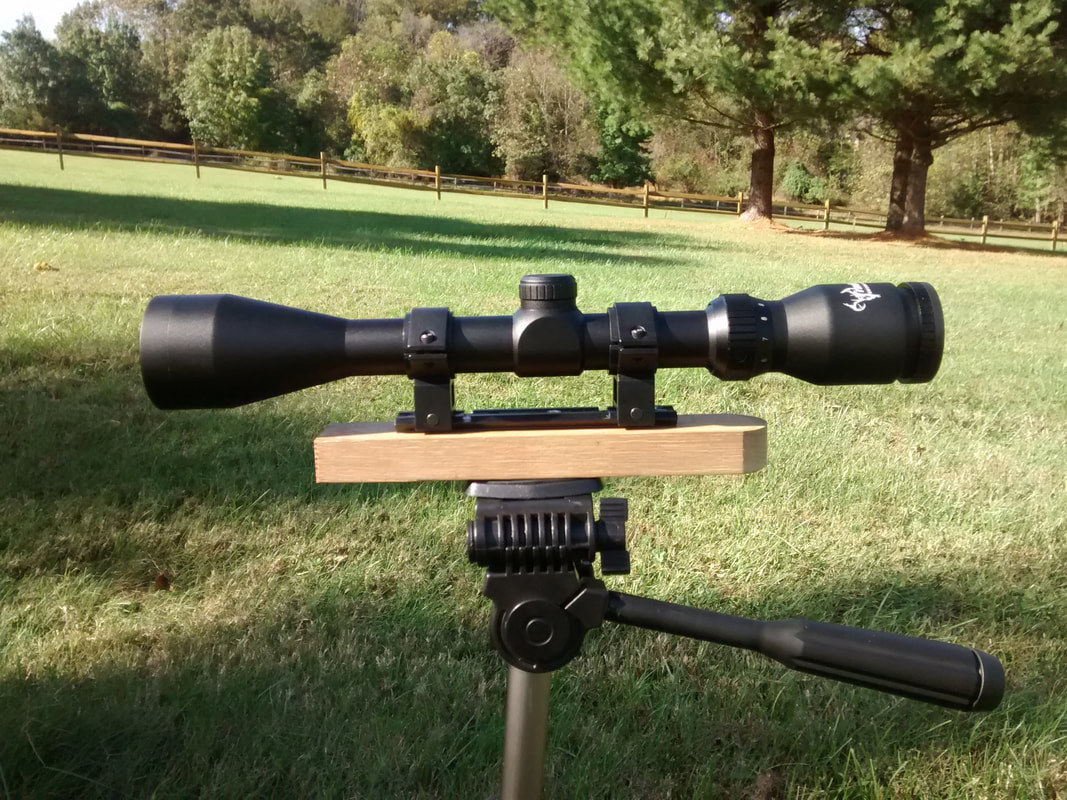
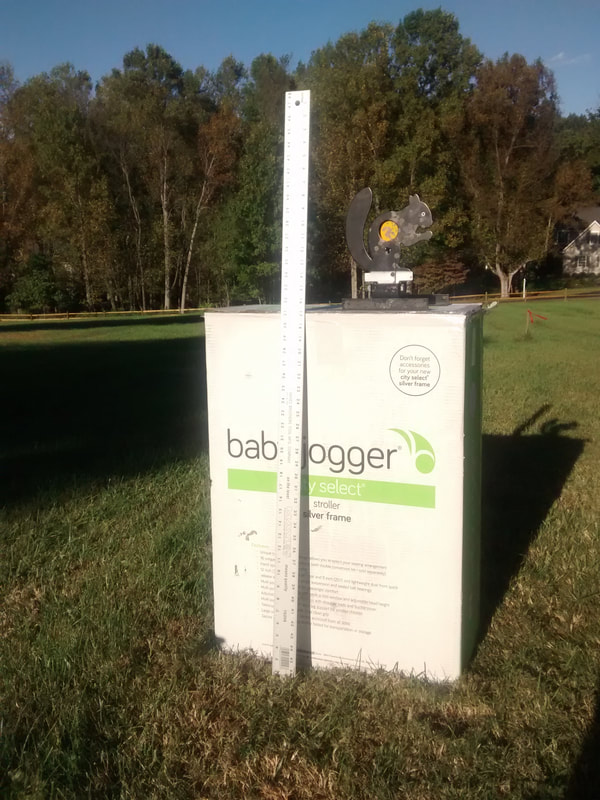
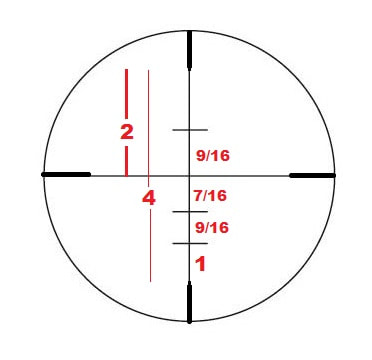
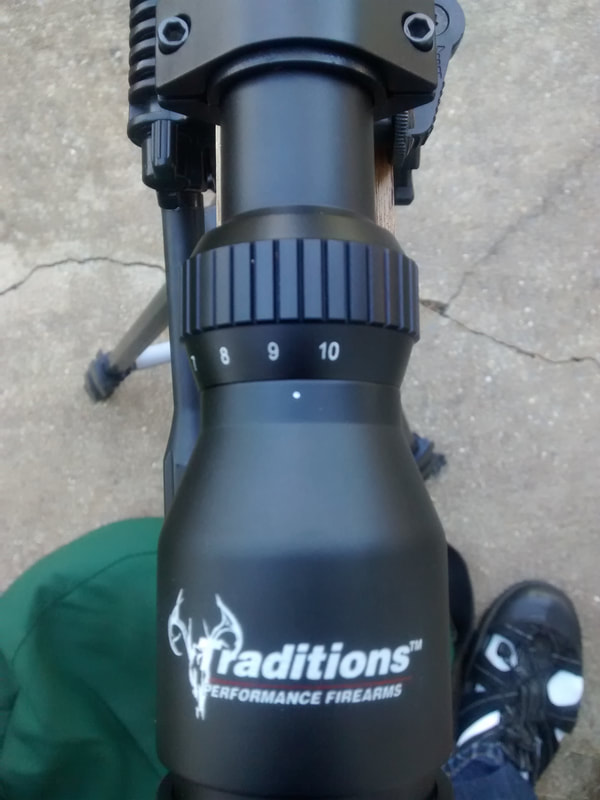
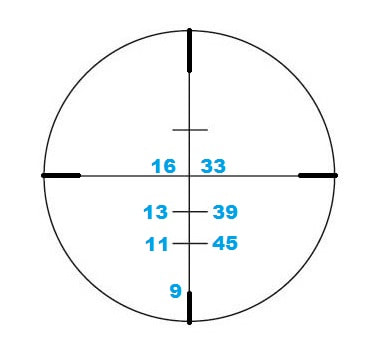

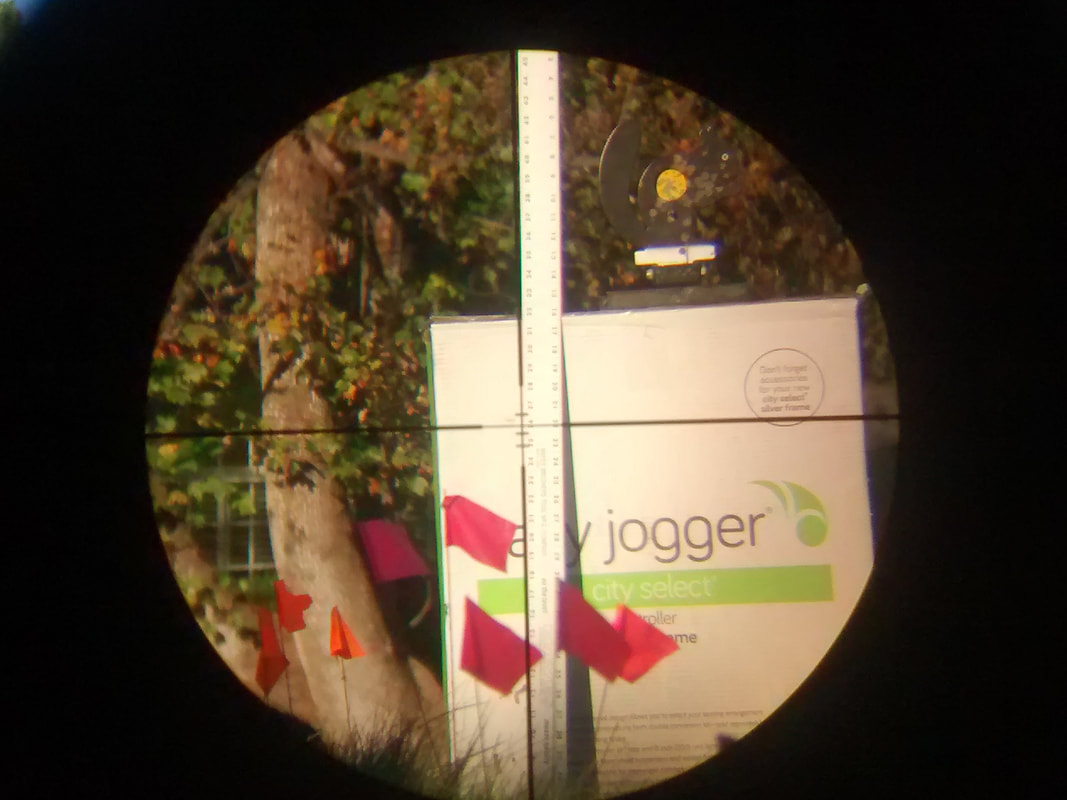
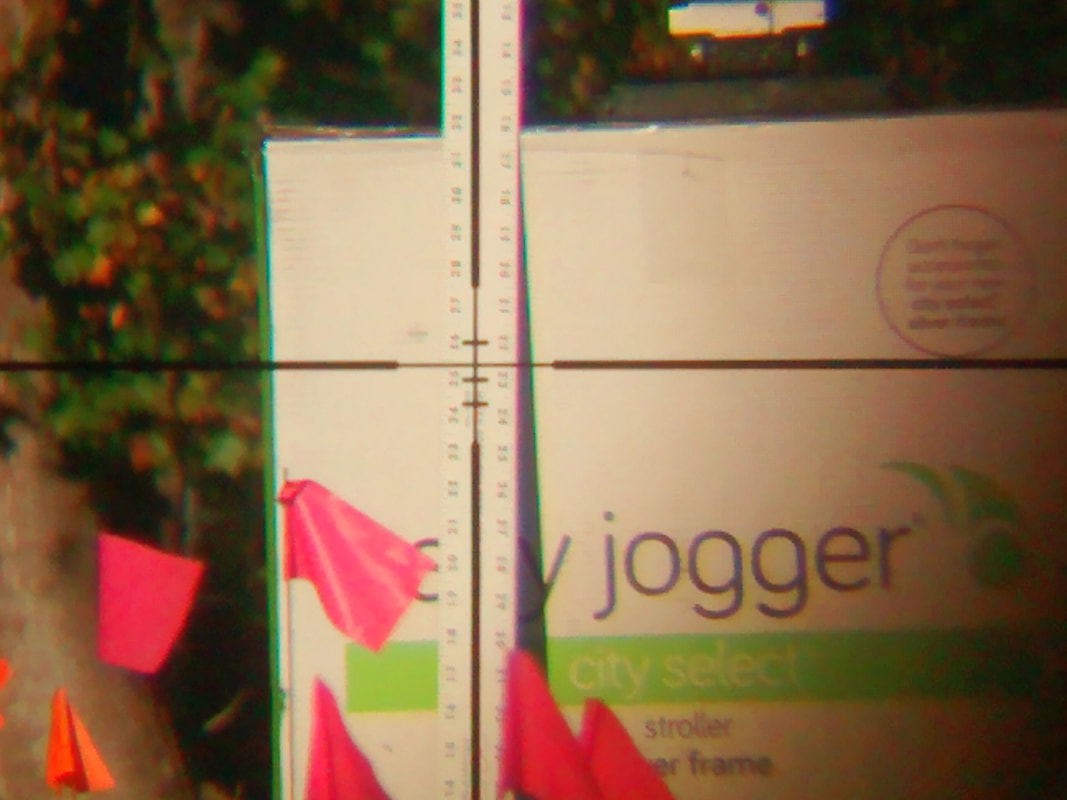
 RSS Feed
RSS Feed